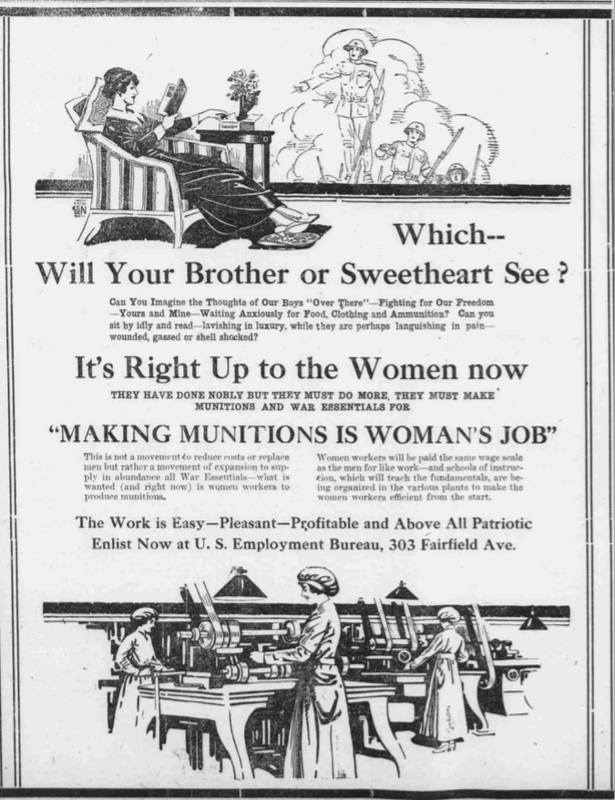World War I was a time of radical change for the world. It is only fitting that it was a watershed in the history of women's involvement in the military. World War I was a war of almost unheard of proportions, and required massive amounts of manpower - both as soldiers and to produce munitions. Women replaced the large numbers of young men that were called to the battlefront. The previous Industrial Revolution had led to the employment of women in factories, particularly in the textile industry. During WWI, women also worked in heavy industries, producing much-needed munitions for the military.
 |
An advertisement encouraging women to work
in the munitions factories |
Women did not just contribute to the war effort on the home front, however, they were also involved overseas. Although they did not serve the military in the traditional sense, they still provided valuable contributions to the war effort. Nurses from the American Red Cross were deployed to Britain and France, and their numbers swelled upon American involvement in the war. These nurses treated the horrific injuries caused by the new military technology of WWI. Some of them lost their lives treating the soldiers, and many were honored for their valor in the field.
 |
| A group of Red Cross nurses aboard a ship headed to Europe |
WWI was notable because women of all classes served the war. Typically, lower and middle-class women took up the call to work in factories and serve as nurses. Upper-class women were founders and members of volunteer organizations because they had the time and money to put into these organizations. Upper-class women used their position to spread awareness and raise funds for the war effort and led the conservation effort on the home front.
One of the notable women that we briefly touched on in class was Edith Wilson. The second wife of President Wilson, Edith encouraged American women to join the rationing efforts. She volunteered at a Red Cross canteen. Edith also arranged for a flock of sheep to graze on the White House lawn and auctioned the wool from those sheep. This event raised both awareness and funds for the war effort.
 |
The "Sheep of the White House," a publicity and fundraising
event for the war effort |
Women of all classes were able to serve the war effort, whether it was serving abroad, working in factories, or just rationing at home. Although much of the progress made during the war was reversed once the war ended, World War I provided a stepping stone to overturning preconceived gender roles held not just in American society, but globally. Women continue to fight for their rights and equality, and there have been a number of other watershed events to accompany the change that sprouted from WWI.


1 comment:
This brings to light how women were successfully able to step up and fill in for roles that were desperately needed by the country to support the war effort. However, it is disappointing to see that so much of the progress women had made was thrown away after the war ended, showing that men and/or people in power didn't believe that women were capable of handling those jobs, even though they had clearly shown they were, through the war. Even with the setbacks, it still truly is impressive to see that female involvement went to such a high degree during these times.
Post a Comment